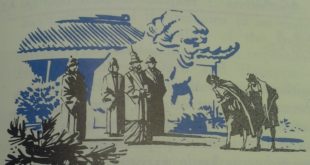In the same way that important ancient civilizations grew out of small beginnings in the valleys of the Nile, the Tigris-Euphrates and the Indus, so another great civilization of Early times — that of China — was cradled in the valley of the Yellow River. To be sure, China’s civilization did not commence as early as did Egypt’s, Mesopotamia’s, or India’s. The ancient Egyptian and the Mesopotamian kingdoms lost their power many centuries ago and early India never became completely united under one empire. China therefore has had a longer national life than any other ancient or modern state. It …
Read More »Tag Archives: Mongolia
Dictatorship and Civil War 1926-1939
THE END OF World War I brought many changes of government in Europe, but in a number of countries the old aristocrats and landowners still had power and the new governments could not solve the problems that faced them. Among these countries was Poland. A democratic form of government had been established, but conflicts between various parties and their leaders kept it from being very effective. General Joseph Pilsudski had helped to set up the new government of Poland. He retired from public office in 1922, when Poland adopted a democratic constitution. Pilsudski wanted a bigger and stronger Poland and …
Read More »The Coming of the Mongols A.D.1135-1368
IN 1135, Hangchow became the capital of the Southern Sung. Thereafter, the Sung kept an uneasy peace with their unwelcome northern neighbours, the Chin. Then, out of Mongolia came the mighty Genghis Khan, whose warriors and their descendants were to spread terror across Asia into Christian Europe and the lands of Islam. Before he died in 1227, Genghis had crushed the Hsi Hsia and all but crushed the Chin. His son, Ogodai, made a treaty with the Sung emperor, and the Sung and Mongol armies together put an end to the Chin. This alliance with a barbarian power turned out …
Read More »The Sui and T’ang Restore the Empire A.D. 589-979
IN 589, a warlord named Sui Wen Ti conquered the last dynasty in the south and so became emperor of all China. He put his subjects to work repairing the Great Wall, building palaces and digging long canals to carry water out to the fields and grain back to the cities. He sent his armies south into Vietnam and west into central Asia. In 604, he died. No one knew how he died, but many people suspected that he had been murdered by his son Yang Ti. As emperor, Yang Ti drove the people even harder than his father had. …
Read More »


